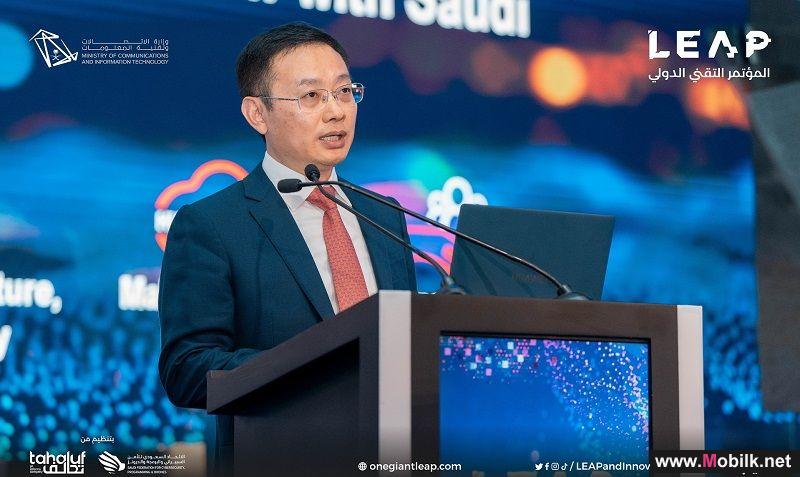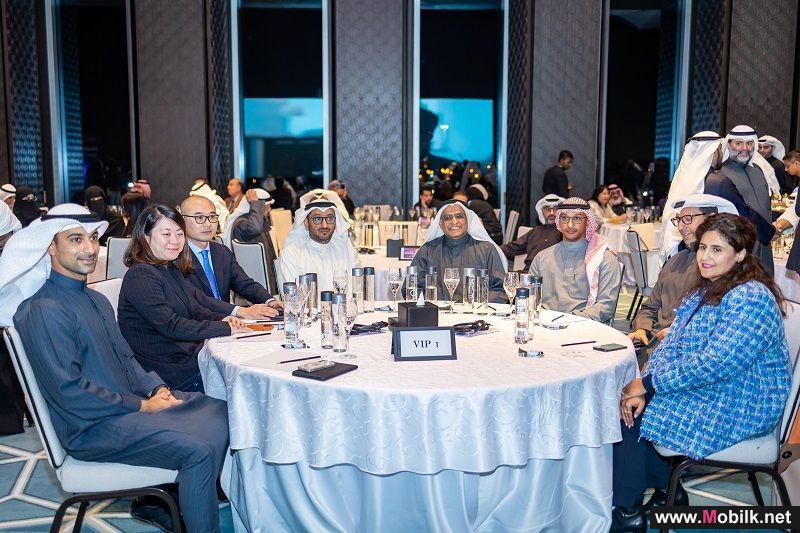‘The Internet of Things will Power the next ‘Smart City’ in UAE’, says Expert from Aruba
Mobilk - Optimistic forecasts for the UAE’s construction sector for the next few years is driven by factors such as encouraging macroeconomics, affirmative demographics, and rising tourism activities as well as a resistant infrastructure project pipeline as part of the country’s strategic Vision 2021.With Dubai Expo 2020 also on the horizon, the government is solidly behind smart development initiatives. As the UAE ushers in this new era of advancement, much has been predicted and promised about the integration of ICT into every aspect of the completed city developments.
The computing capabilities of mobile & IoT devices have advanced to a level that has made them capable of aiding the planning, designing, and building phases. But turning mobility into an effective tool requires not only computing power but also connectivity. At job-sites, wired connections are not feasible and cellular networks are not always available and hence a strong case can therefore be made for developers to utilize Wi-Fi solutions. These are not only easy to install and manage, but are now also affordable and rugged enough to see deployment in harsh construction surroundings.
Gamal Emara, Country Manager - UAE, HPE Aruba says that the Internet of Things (IoT) represents a huge opportunity for the construction industry, which is constantly processing data and strives for workplace safety, as well as efficiency. IoT needs a secure, scalable network to succeed and Wi-Fi offers what IT departments require for strong ‘construction IoT networking’.
Facilitating Workflow
With the introduction of tablet devices, mobile project management has emerged as a worthy replacement to age old methods. Coupled with the broad ecosystem of feature-rich mobile applications and the ability to draw from vast amounts of remotely stored data and cloud services, these devices are capable of granting contractors, engineers and supervisors access to blue prints, schematics and other vital documents. Moreover, with the ability to instantly push updates to all members working on the project, mobile computing devices can aid collaboration and revolutionize the building information modeling (BIM) process in real-time.
With site-wide high speed wireless connectivity for all mobile devices, workers gain the ability to transfer high volumes of data back and forth between not only each other but also headquarters (HQ). This significantly streamlines communications while cutting costs and improving operational efficiencies. This could also bear attractive green side effects as staff no longer have to make regular trips to and from HQ.
High speed wireless connectivity is an enabler of the following applications:
Wearables
A truck driver can be required to wear a “wearable”, which may come in the form of an activity band. Drivers and management can be notified if a driver is missing or is being unproductive. Construction workers on-site can wear a helmet and vest with RFID, vitals monitoring, GPS sensors, motion sensors, etc.
Smart GPS
Knowing GPS data related to where your equipment is located and how it is being used is important for identifying cost savings opportunities and keeping your fleet organized. These benefits can be uncovered by analyzing the GPS data from across your fleet and comparing it over a period of time.
Asset Tracking
At job sites, company assets are a major investment and the progress of construction is heavily dependent on their functionality. Heavy-equipment is often required to be left on-site overnight which makes them a prime target for theft. Asset tracking technologies help monitor such equipment remote locations and automatically detect and report suspicious behaviour.
Developers can also benefit from automated maintenance schedules, logs and reports. The readiness of cheap and easy-to-use RFID technology has made possible the automation of inventory management. By knowing in advance which materials are soon to run out, construction companies can foresee and avoid material deficiencies, thus eliminating losses in productivity. Equipment repairs are one of the largest operating costs in the construction industry. With the advanced sensors available now, machinery can self-detect the need for a repair before it becomes a larger issue.
Equipment Inspection
Similar to monitoring and repair, equipment inspections can be enormously enhanced by the help of smart sensors. With the advanced sensors available now, machinery can self-detect the imminent need for a repair before it becomes a larger issue. Lost/late forms, low accuracy and undue internal processing time are no longer an issue with electronic processes.
Site Security
Another vital area of a construction site where mobile technology can be applied is in video surveillance. Not only does this enable better collaboration and remote supervision, it is essential to site security. High-speed connectivity for robust and cost-effective camera equipment can mean the ready availability of high definition video, making both identification and collaboration easier.
Evaluating IoT and Mobiiity Solutions for the Construction Site
An Internet of Things solution implementation is not impossible to manage, but it’s not easy either. In fact, developing solutions for the Internet of Things requires unprecedented collaboration, coordination and connectivity for each piece in the system, and throughout the system as a whole. All devices must work together and be integrated with all other devices, and all devices must communicate and interact seamlessly with connected systems and infrastructures. The challenge for the developer is to find a robust enterprise-class Wireless Local Area Network (WLAN) solution that is affordable in terms of the capital expense and operational overheads.
In line with keeping things simple, developers should also consider investing in controller-less instant WLAN solutions. These solutions utilize a virtual controller on access points to deliver controller-like features including RF management and role based access control. As construction integrates more deeply with IT, network uptime will become an increasingly important factor. It is therefore prudent to invest in network management tools which can prove invaluable in providing maximum network availability. Companies must look for a service provider whose solution is based on the latest 802.11ac wireless standard as this delivers gigabit Wi-Fi combined with the device density and application intelligence required by today’s Wi-Fi networks.
There is also a need to balance cyber and physical security since smart devices are physical in nature. For any country keen to drive smart cities, both cyber and physical security should always be considered in the upstream of the project.
Reports and Studies
China Telecom Global Limited (CTG), the world-leading provider of integrated telecommunication services, has signed a strategic subsea capacity and..
Reports and Studies
Espoo, Finland – Nokia, Qualcomm Technologies, Inc., and T-Mobile today announced that they have achieved a worlds first showcase of successfully..
Reports and Studies
Steven Yi, President of Huawei Middle East and Central Asia, gave a keynote on the second day of LEAP, Saudi Arabias largest and most comprehensive..

 Vodafone Oman
Vodafone Oman Emirates Telecom
Emirates Telecom  Ooredoo Om
Ooredoo Om Ooredoo Qa
Ooredoo Qa stc Bahrain
stc Bahrain Orange Egypt
Orange Egypt Mobily
Mobily Zain Jo
Zain Jo omantel
omantel STC
STC Emirates Du
Emirates Du Asiacell
Asiacell Etisalat Egypt
Etisalat Egypt  Telecom Egypt
Telecom Egypt jawwal
jawwal Orange Jo
Orange Jo Umniah
Umniah Zain Sa
Zain Sa Bahrain Batelco
Bahrain Batelco Zain Bh
Zain Bh Wataniya palestine
Wataniya palestine Kuwait Viva
Kuwait Viva  Zain Kw
Zain Kw Vodafone Qa
Vodafone Qa MTN Syria
MTN Syria Syriatel
Syriatel Sabafon
Sabafon Zain Iq
Zain Iq MTN Yemen
MTN Yemen Ooredoo Kw
Ooredoo Kw Vodafone Egypt
Vodafone Egypt  Samatel
Samatel Huawei
Huawei Samsung
Samsung MOTOROLA
MOTOROLA Lenovo
Lenovo Alcatel
Alcatel LG
LG Nokia
Nokia Sony Ericsson
Sony Ericsson HTC
HTC BlackBerry
BlackBerry Siemens
Siemens Acer
Acer Sony
Sony Asus
Asus VK
VK APPLE
APPLE BenQ-Siemens
BenQ-Siemens Sagem
Sagem Eten
Eten HP
HP Panasonic
Panasonic Amoi
Amoi Toshiba
Toshiba Sharp
Sharp Sonim
Sonim Bird
Bird Mitac
Mitac Philips
Philips Vertu
Vertu Pantech
Pantech Micromax
Micromax Maxon
Maxon Haier
Haier I-mate
I-mate Gigabyte
Gigabyte I-mobile
I-mobile Kyocera
Kyocera BenQ
BenQ Microsoft
Microsoft Telit
Telit Connect
Connect Sendo
Sendo SEWON
SEWON Mitsubishi
Mitsubishi NEC
NEC DELL
DELL Thuraya
Thuraya Neonode
Neonode Be
Be Qtek
Qtek Bosch
Bosch Palm
Palm MWG
MWG Fujitsu Siemens
Fujitsu Siemens XCute
XCute WND
WND INQ
INQ O2
O2 Innostream
Innostream Benefon
Benefon Google
Google


















